Overview
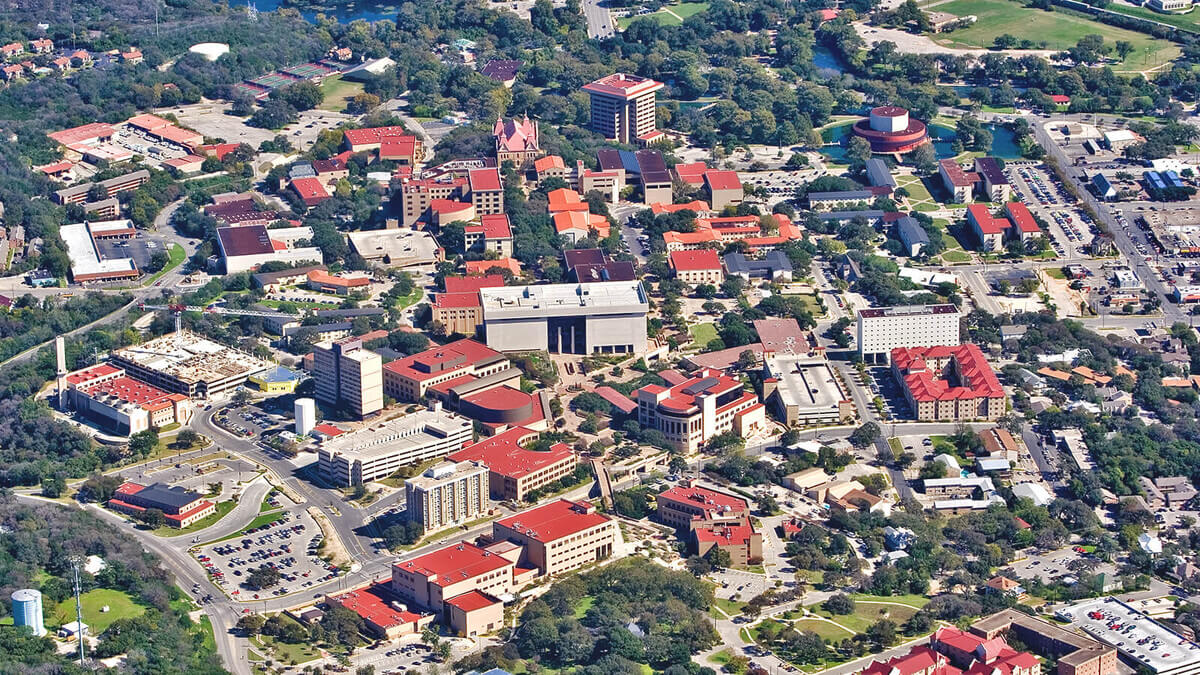
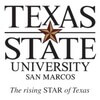

Texas State University
San Marcos, TX, USA
Public
4 Year
Overview
Founded in 1899, Texas State University is a 4-year public school in south Texas and the largest campus in the TSU system. TSU hosts nine colleges conferring undergraduate degrees in 98 academic majors. Every year, Texas State unveils a Common Experience academic theme shared by all students through lecture series, gallery presentations, and a common book. In addition to classroom facilities, Texas State features the largest forensics research facility in the world and the Meadows Center for Water and the Environment which provides glass bottom boat tours of the springs running through campus.
Acceptance Rate:
88%
Average Net Price:
$13,750
Campus Setting:
Small city
Average GPA
3.4
Average ACT Composite
22
Average SAT Composite
1102
Tuition, Cost & Aid
Affordability & Cost
Average Net Price
$13,750
Discover how military service can help you pay for college
Explore Military PathwaysTuition
| In-State Tuition In-state tuition is the tuition charged by institutions to those students who meet the state's or institution's residency requirements. In-district tuition is the tuition charged by the institution to those students residing in the locality in which they attend school and may be a lower rate than in-state tuition if offered by the institution. | $11,450 |
| Out-of-State Tuition Out-of-state tuition is the tuition charged by institutions to those students who do not meet the state’s or institution’s residency requirements. Out-of-district tuition is the tuition charged by the institution to those students not residing in the locality in which they attend school. | $23,210 |
Additional Costs
Room and Board The weighted average for room and board and other expenses is generated as follows:
| $12,270 |
| Books and Supplies | $740 |
Average Net Price By Family Income
Income
Average Amount
< $30k
$11,814
$30k - $48k
$12,231
$48k - $75k
$12,697
$75k - $110k
$16,251
$110k+
$21,700
Financial Aid: visit page
Financial Aid Email: [email protected]
Aid & Grants
0
100
68%
Need Met
Students Receiving Gift Aid Percent of undergraduate students awarded federal gift aid. Federal gift aid includes any grant or scholarship aid awarded, from the federal government, a state or local government, the institution, and other sources known by the institution. Students Receiving Grants Percent of undergraduate students awarded grant aid. Grant aid includes any grant or scholarship aid awarded, from the federal government, a state or local government, the institution, and other sources known by the institution.
36%
Average Aid Per Year
$11,791
36%
Average Federal Grant Aid Per Year
$5,111
Average Institution Grant Aid Per Year
$6,437
Students receiving state aid Students receiving federal aid
59%
Average State Grant Aid Per Year
$7892
40%
Average Federal Grant Aid Per Year
$5,111
Total Needs Based Scholarships/Grants Total amount of grant or scholarship aid awarded to all undergraduates from the federal government, state/local government, the institution, and other sources known to the institution.
$151,250,240
Total Non-Need-Based Scholarships/Grants
$39,537,108
Student Loans
Students Borrowing Loans Loans to students - Any monies that must be repaid to the lending institution for which the student is the designated borrower. Includes all Title IV subsidized and unsubsidized loans and all institutionally- and privately-sponsored loans. Does not include PLUS and other loans made directly to parents.
50%
Average Loan Amount Per Year
$5,703
Average Debt at Graduation The median federal debt of undergraduate borrowers who graduated. This figure includes only federal loans; it excludes private student loans and Parent PLUS loans.
$14,000
Median Monthly Loan Payment The median monthly loan payment for student borrowers who completed, if it were repaid over 10 years at a 5.05% interest rate.
$198
Students receiving federal loans
48%
Average Federal Loans Per Year
$4,899
Average Other Loans Per Year
$13,243
Admissions
Key Admissions Stats
Institution Type
Public
- Not for Profit
- Coed
Need Blind
This school does not consider an applicant’s financial situation when deciding admission
Level of Institution
4 Year
Campus Setting
Small city
28908
Students Applied
81%
Transfer Acceptance Rate
2682
Transfer Students Admitted
Admissions Requirements
SAT
No
ACT
No
Transcript
Yes
Test Optional
Yes
SAT Subject Tests
Yes
AP Course Credit
Yes
Dual Enrollment
Yes
Important Deadlines
| Application Type | Application Deadline | Reply Deadline |
|---|---|---|
| Fall Regular Decision | July 15 | June 1 |
| Spring Regular Decision | November 15 |
Application Fee
$75
Fee waivers availableApplications Accepted
Admitted Student Stats
In-State Students
97%
Out-Of-State Students
3%
8%
Submitting ACT
49%
Submitting SAT
Average ACT Composite: 22
0
36
Average SAT Composite: 1102
0
1600
SAT Percentiles
Math
25th
480
75th
580
Reading
25th
500
75th
600
3.4
Average GPA
Students Enrolled By Class Rank
Top 10%
12
Top 25%
41
Top 50%
78
Students Enrolled By Household Income
< $30k
1114
$30k - $48k
710
$48k - $75k
750
$75k - $110k
514
$110k+
890
Admissions Resources
For International Student Services: visit page
For Students with Disabilities: visit page
For Veteran Services: visit page
Academics
Key Academic Stats
Highest Degree Offered
Doctorate
Total Number of Students
38,171
Total Number of Undergrads
33,834
0
100
31%
Graduate in 4 Years US National: 28%
0
100
55%
Graduate in 6 Years US National: 52%
Student:Faculty Ratio
21:1
US National: 21:1Non Traditional Learning
- Online Classes
- Online Undergrad Degrees
- Summer Sessions
- Combined Institution Double Degree Programs
- Some Programs Requires Co-Op/Internship
Learning Options
- ROTC Army
- ROTC Air Force
- Study Abroad
- Honors Program
- Teacher Certification Offered
Classroom Sizes
2-19 Students
32%
20-39 Students
44%
40-99 Students
16%
100+ Students
6%
Degrees and Majors
MAJORS
137
Majors
| A B M D | |
|---|---|
| AGRICULTURAL/ANIMAL/PLANT/VETERINARY SCIENCE AND RELATED FIELDS | |
| ARCHITECTURE AND RELATED SERVICES | |
| BIOLOGICAL AND BIOMEDICAL SCIENCES | |
| BUSINESS, MANAGEMENT, MARKETING, AND RELATED SUPPORT SERVICES | |
| COMMUNICATION, JOURNALISM, AND RELATED PROGRAMS | |
| COMMUNICATIONS TECHNOLOGIES/TECHNICIANS AND SUPPORT SERVICES | |
| COMPUTER AND INFORMATION SCIENCES AND SUPPORT SERVICES | |
| EDUCATION | ✓ ✓ |
| ENGINEERING | |
| ENGINEERING/ENGINEERING-RELATED TECHNOLOGIES/TECHNICIANS | |
| ENGLISH LANGUAGE AND LITERATURE/LETTERS | |
| FAMILY AND CONSUMER SCIENCES/HUMAN SCIENCES | |
| FOREIGN LANGUAGES, LITERATURES, AND LINGUISTICS | |
| HEALTH PROFESSIONS AND RELATED PROGRAMS | |
| HISTORY | ✓ ✓ |
| HOMELAND SECURITY, LAW ENFORCEMENT, FIREFIGHTING AND RELATED PROTECTIVE SERVICES | |
| LEGAL PROFESSIONS AND STUDIES | |
| LIBERAL ARTS AND SCIENCES, GENERAL STUDIES AND HUMANITIES | |
| MATHEMATICS AND STATISTICS | |
| MULTI/INTERDISCIPLINARY STUDIES | |
| NATURAL RESOURCES AND CONSERVATION | |
| PARKS, RECREATION, LEISURE, FITNESS, AND KINESIOLOGY | |
| PHILOSOPHY AND RELIGIOUS STUDIES | ✓ ✓ |
| PHYSICAL SCIENCES | |
| PSYCHOLOGY | |
| PUBLIC ADMINISTRATION AND SOCIAL SERVICE PROFESSIONS | ✓ ✓ |
| SOCIAL SCIENCES | |
| VISUAL AND PERFORMING ARTS |
Faculty Overview
0
100
59%
Faculty With Terminal Degree US National: 36%
Gender
Male
Female
US National: 42%
US National: 48%
Ethnicity
African American
Asian/Pacific Islander
White
Hispanic
Multi-Racial
Unknown
Campus Life
Key Campus Stats
Student Gender
Male
Female
40%
US National: 44%60%
US National: 56%Residency
In-State Students
97%
Out-Of-State Students
3%
Size of Town
Small city
US States Represented
51
Countries Represented
62
Ethnicity
African American
9%
Asian/Pacific Islander
3%
Hispanic
42%
White
40%
Multiracial
4%
Unknown
1%
Percent of First Generation Students
36%
Student Organizations
365
LGBTQIA Student Resource Groups
Yes
On Campus Women's Center
No
Cultural Student Resource Groups
Yes
Housing
0
100
19%
Undergrads Living on Campus
On-campus living required of freshman
No
Disability Housing Available
Yes
0
100
21%
Freshman Living on Campus
Athletics
Divisional Sports Nickname
Bobcats
School Colors
maroon and gold
Varsity Athletics Association
NCAA
Varsity Athletics Conference Primary
Sun Belt Conference
Total Male Athletes
220
Total Female Athletes
116
Intramural Sports
15
Sports Club
54
Sports Team (Men)
- Baseball
- Basketball
- Cross Country
- Football
- Golf
- Track and Field
Sports Team (Women)
- Basketball
- Cross Country
- Golf
- Soccer
- Softball
- Tennis
- Track and Field
- Volleyball
Texas State University Athletics: visit page
Campus Safety
24-HR security patrol
Yes
Campus emergency phones
Yes
24-HR escort safety rides
Yes
Mobile campus emergency alert
Yes
After Graduation
Post Grad Stats
Average Salary
6 years after graduation
$51,100
Top 5 Cities
Austin
Houston
San Antonio
Dallas
Denver
Top 5 Employers
Texas State University
Dell
HEB
USAA
Apple
Top 5 Sectors
Business Development
Sales
Operations
Education
Information Technology
Average Debt at Graduation The median federal debt of undergraduate borrowers who graduated. This figure includes only federal loans; it excludes private student loans and Parent PLUS loans.
$14,000
Loan Default Rate
7%
National: 8%
Median Monthly Loan Payment The median monthly loan payment for student borrowers who completed, if it were repaid over 10 years at a 5.05% interest rate.
$198
REVIEWS
Read What Students Are SayingI received 42 credit hours from IB and AP classes in high school and my first semester courses were just basically review classes for me. However, since I have all of my core classes out of the way, I can take Upperclassmen and Honors courses for my major as a first year student.
Laura from Garland, TX
I am looking forward to experiencing this school in July and getting a head start before the Fall session begins.
Kristen from Lubbock, TX
The professors here at Texas State strive very hard to get their students on the right track. The school offers many educational tools like instructional assistants, tutors, SLAC, math learning center, writing center, library assistance, and many more resources are available to those who are willing to spend some time studying.
Karla from San Marcos, TX
The first couple of classes i assumed that it was just going to be like some high school classes would be..show up to class,barely learn anything and get somebusy work to do but after we got in the whole transition period my eyes where opened and i realized college is fifty times better than high school.
Kyle from Port Lavaca, TX
The professors all have a passion for their craft, so no matter what class your in you will learn immense amounts of information with ease. I usually do not like political science, but my professor is so into it that it is difficult not to get fired up about the topics in her lectures.
Samantha from Sugar Land, TX
The classes are excellent, and the most of the professors are very passionate about what they are teaching. I actually have a hard time choosing what classes to take every semester because there are so many great choices!
Amber from Conroe, TX
You go much more in depth into the material than you do in high school courses. You are also allowed to talk about more topics that are discouraged in high school.
Staci from Spring, TX
The learning aspect of college is sometimes the part everyone forgets, why else would you spend thousands of dollars on your education? You might as well benefit from it. Sure everyone refers to Texas State as the party school but it doesn't mean we don't have knowledge either. Texas State has expanded over the years, and will continue to do so. The best advice I can give you, is get help personally from your teacher. Not only are you going directly to your source of knowledge but it also allows your professor to get to know you and see you take initiative and interest in their class. Not only that, but take advantage of SLAC tutors! I can't stress it enough.
Jerika from Cedar Park, TX
Majority of professor's are well rounded and are good at what they teach. Most enjoy being there or love what they teach, making it easier for the student to learn and understand.
Brittney from Flower Mound, TX
Theres a large amount of classes offered and teachers really seem to care about their students and in my experience have been readily available to help the students.
Kirsten from Seguin, TX
Similar Colleges
 Waco, TX
Waco, TX Corpus Christi, TX
Corpus Christi, TX Houston, TX
Houston, TX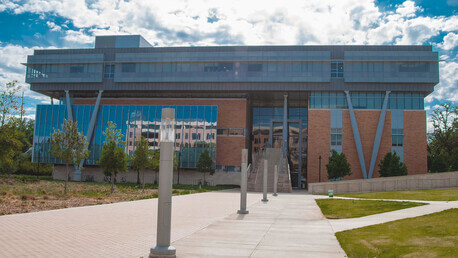 Denton, TX
Denton, TX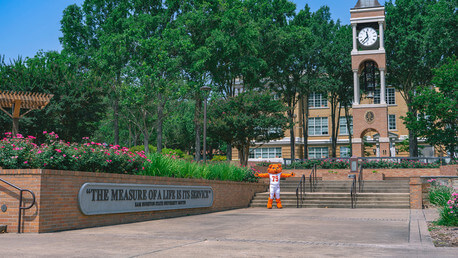 Huntsville, TX
Huntsville, TX Nacogdoches, TX
Nacogdoches, TX College Station, TX
College Station, TX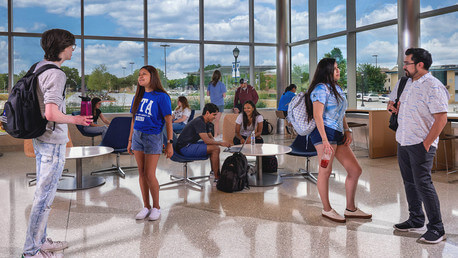 Arlington, TX
Arlington, TX Austin, TX
Austin, TX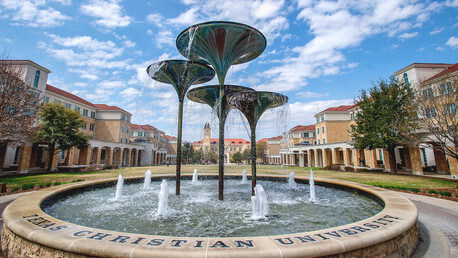 Fort Worth, TX
Fort Worth, TX San Antonio, TX
San Antonio, TX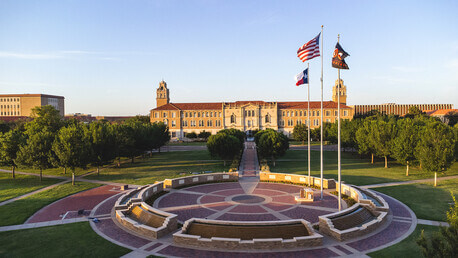 Lubbock, TX
Lubbock, TX
Texas State University